The Many Impacts of Leok Po
From climate change to government regulations, from advocacy for Indigenous People to poetry and art, these Cultural Burns such as the recent Leok Po demonstration are moving the needle on societal norms and understandings at every scale of life.
This year, the Leok Po workshop here at the Cache Creek Conservancy was divided into two parts. The first day, Friday, was a Cultural Awareness Day which ended in a Cultural Burn designed and led by Tribal Matriarch Diana Almendariz (Wintun and Maidu).
The following two days took place at Yocha Dehe’s Brooks location. Fire professionals from various fire departments and the Department of Forestry and Fire Protection (CAL FIRE), along with other people learning to be fire leaders received training and practice in the nearly lost skill of collaborating with fire, rather than trying to dominate it.
There were 75 people in attendance on Saturday and 56 people on Sunday. Many of these professionals have been trained solely on conventional methods of fighting fire. To quote Dr. Melinda Adams (N’dee, San Carlos Apache), one of the leaders and ‘burn bosses’ of the event…
“…agency participants took a step back from fire suppression and instead listened, watched and learned a different way of placing good fire.”
Melinda Adams, Indigenous Ecologies: Cultivating Fire, Plants, and Climate Futurity
The Conservancy has received funding from a CAL FIRE grant to continue Leok Po workshops for the next two years.
The fact that these events are even possible is due to the state of California’s recent recognition that they need to rely on private entities to manage excessive wildland fuel supplies. By passing Senate Bill 332 (Dobbs) in late 2021, the state reduced the costs to the state for landowners and certified burn bosses whose fires got out of control (as long as they meet a certain set of criteria and are not acting out of gross negligence).
What matters for these Leok Po workshops is that the Bill also recognized that Cultural Burning is a valuable contribution to fuel management, and that experienced, Indigenous practitioners are already qualified to plan and conduct burns without a CAL FIRE certified burn boss. These leaders of Cultural Burns are called “Cultural Fire Practitioners” in SB 332.
From the bill:
“Cultural burn” means the intentional application of fire to land by Native American tribes, tribal organizations, or cultural fire practitioners to achieve cultural goals or objectives, including subsistence, ceremonial activities, biodiversity, or other benefits.
“Cultural fire practitioner” means a person associated with a Native American tribe or tribal organization with experience in burning to meet cultural goals or objectives, including subsistence, ceremonial activities, biodiversity, or other benefits.
Challenge Coin
The Cache Creek Conservancy was honored this year by the Yocha Dehe Fire Department with the presentation of their Challenge Coin at the recent Leok Po cultural burn.
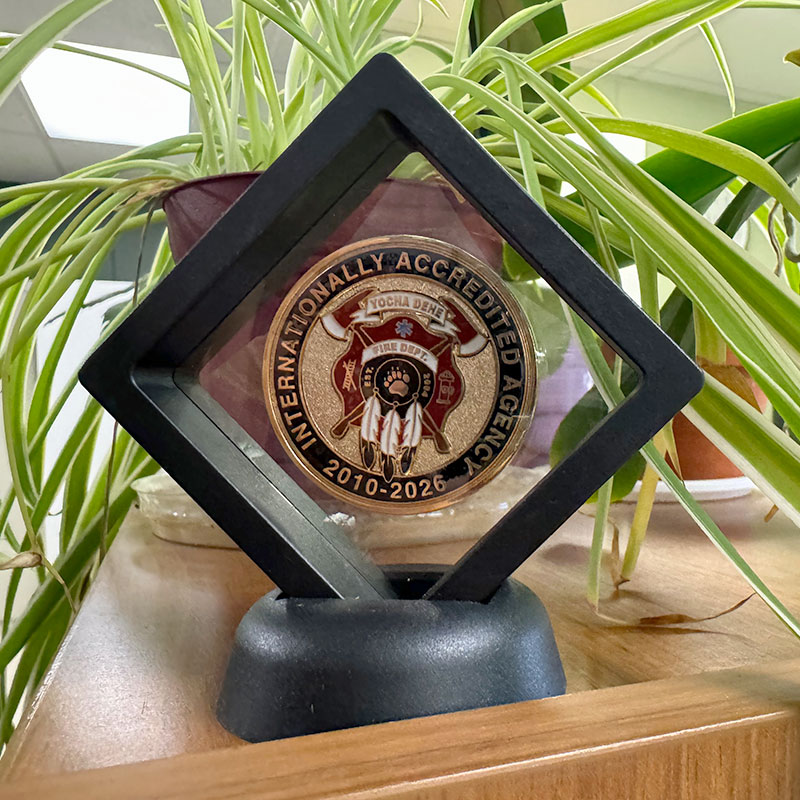
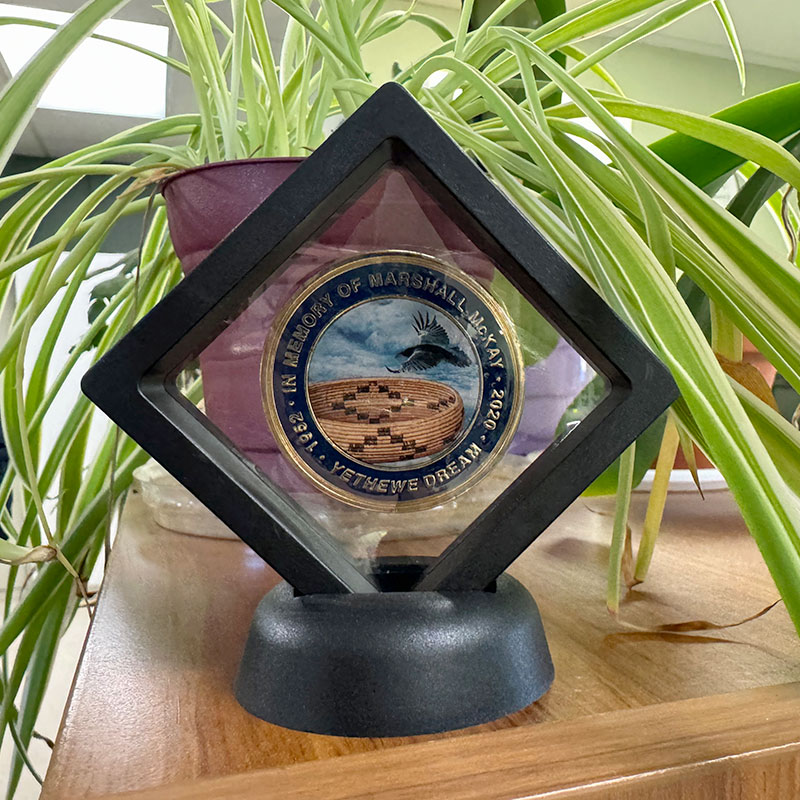
The coin was presented to the Conservancy for its effort to honor and respect cultural traditions while educating people about Native American traditional and ecological knowledge. It was given and received with deep mutual appreciation between the two organizations for the work involved in putting on the Leok Po workshop.
Food, Fiber & Medicine
The Cultural Awareness Day was attended by more than 100 adults and several children. There were several stations demonstrating the how to’s and the beneficial results of a Cultural Burn.
You can see photos of the demonstration workshop in our Photo Gallery
Greenville Assistant Fire Chief Danny Manning (Maidu) showed us how to make fire from native plant materials. Many of his proteges were in attendance and they helped make the starting fire for the Cultural Burn. He had examples of baby baskets made from plant fibers that were older and too knobby for a mother and baby’s comfort.
Dr. Melinda Adams and Chrissy Alemdariz were set up under the gazebo with supplies for making fire carrying torches. Since TGG supplies basketry materials–and many basket weavers traditionally use their mouth as part of the weaving practice–propane fire starters are not used to starting Cultural burns.
Diana Almendariz is an expert on tule, or Tlaka in the Wintun language. Besides planning the ‘family burn’, she led the opening circle and ran station 3. Diana teaches about local Native history and traditions and how to use Tlaka to make everything from baskets to canoes.
Clint McKay (Dry Creek Pomo, Northern Sierra Miwok, Wappo) is an Indigenous education coordinator for Pepperwood Preserve, a wildlife refuge and conservation organization in Sonoma County. He is also a gifted basketweaver and has a Master’s Degree in Indigenous Education.
Clint ran station four where he talked about water quality and clearing brush to keep water quality high in an area.
“Too often, he said, the Western response is to try to extinguish every blaze, even when it may be healthier for the land to let it burn.“
Clint McKay in The Press Democrat, August 2021
At the fifth station, our special guest, Ali Meders-Knight (Mechoopda) showed us a variety of edible and useful riparian plants. She also showed us how easy it is to propagate some of them. Cottonwood can be stuck in the ground as a stick. A flowering shrub commonly called gum plant, or more scientifically Great Valley Gumweed (Grindelia camporum), can grow from the dried flower seeds being scattered on the ground.
“Riparia is nature’s grocery store.”
~ Ali Meders-Knight
Ali Meders-Knight is a traditional basket weaver, Master Practitioner of Indigenous Traditional Ecological Knowledge (ITEK) and executive director of California Open Lands, which works to restore land and community in California using community-based cultural stewardship rooted in ITEK.
In the News
Several media firms were at the event. Here are links to their articles, photos and videos.
‘Fire is living’: How this Woodland nature preserve uses cultural burning for regrowth
Sacramento Bee, Sabrina Bodon, November 14, 2023
The SacBee story was posted in Phys.org which also published an article on a paper by John N. Williams, a project scientist from UC Davis.
Overcoming obstacles to prescribed fire in the North American Mediterranean climate zone
“Research article: Low-intensity fires mitigate the risk of high-intensity wildfires in #California’s forests — Science Advances #ActOnClimate“
Coyote Gulch, a blog curating papers and articles on water issues.
‘Leok Po’ cultural burn workshop puts focus on Native American history
Daily Democrat, Jim Smith, November 12, 2023
Living Fire
One of the lessons we learned in the Cultural Awareness Day is that ‘fire is living.’ The following vignette is the author’s attempt to imagine what a Cultural Burn would be like to the living entity we know as fire.
“Fire is a living being. It has a mind of its own.”
~ Diana Almendariz, Leok Po 2023 at the Tending & Gathering Garden

I begin to awaken.
The boy’s earnest energy has called me. His breath enlivens me. I taste the treat of cottonwood fluff and eat it up, throwing flakes of gray ash into the air. The boy feeds me shreds of bark, then twigs.
I am growing. I am waiting.

My big brother, Beneficial, is not here and neither is our vast, wild, roaring elder.
I am surrounded by my sky and water relatives, by my plant relatives Nope Laol, Tlaka and Lul and by my human relatives.
The wind swirls with their prayers. I am Leok Po, good fire. I am awakened to regenerate, to start food for the deer, baskets for babies and to balance to the soil.
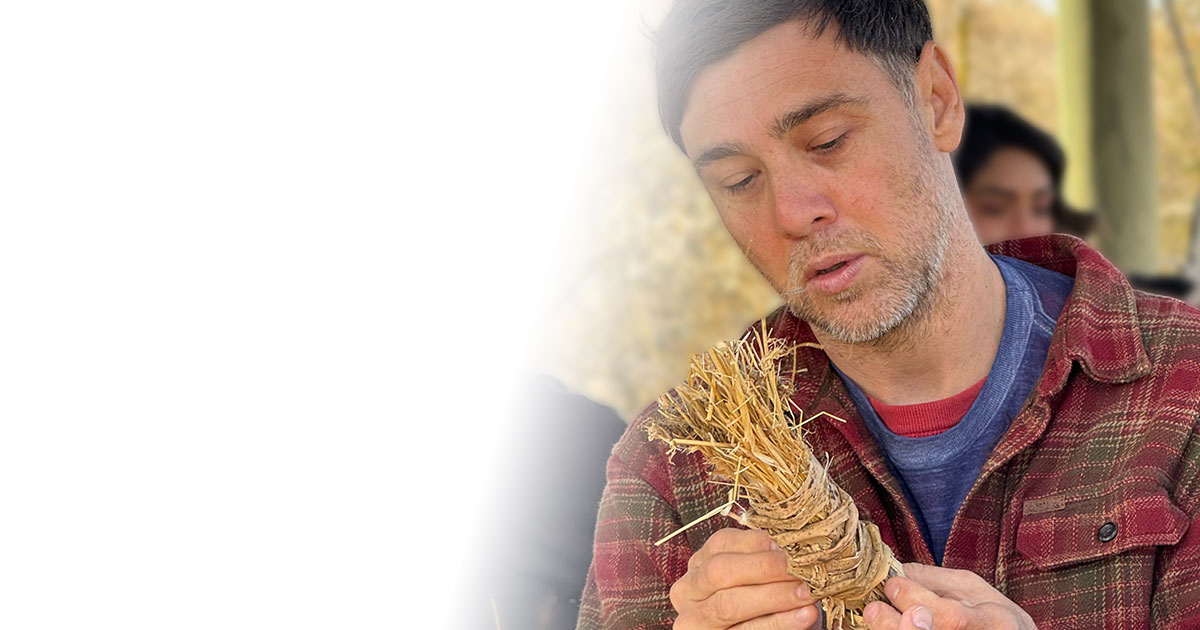
A bundle of rye and fluff, wrapped up with sacred purpose enters my space. I leap!
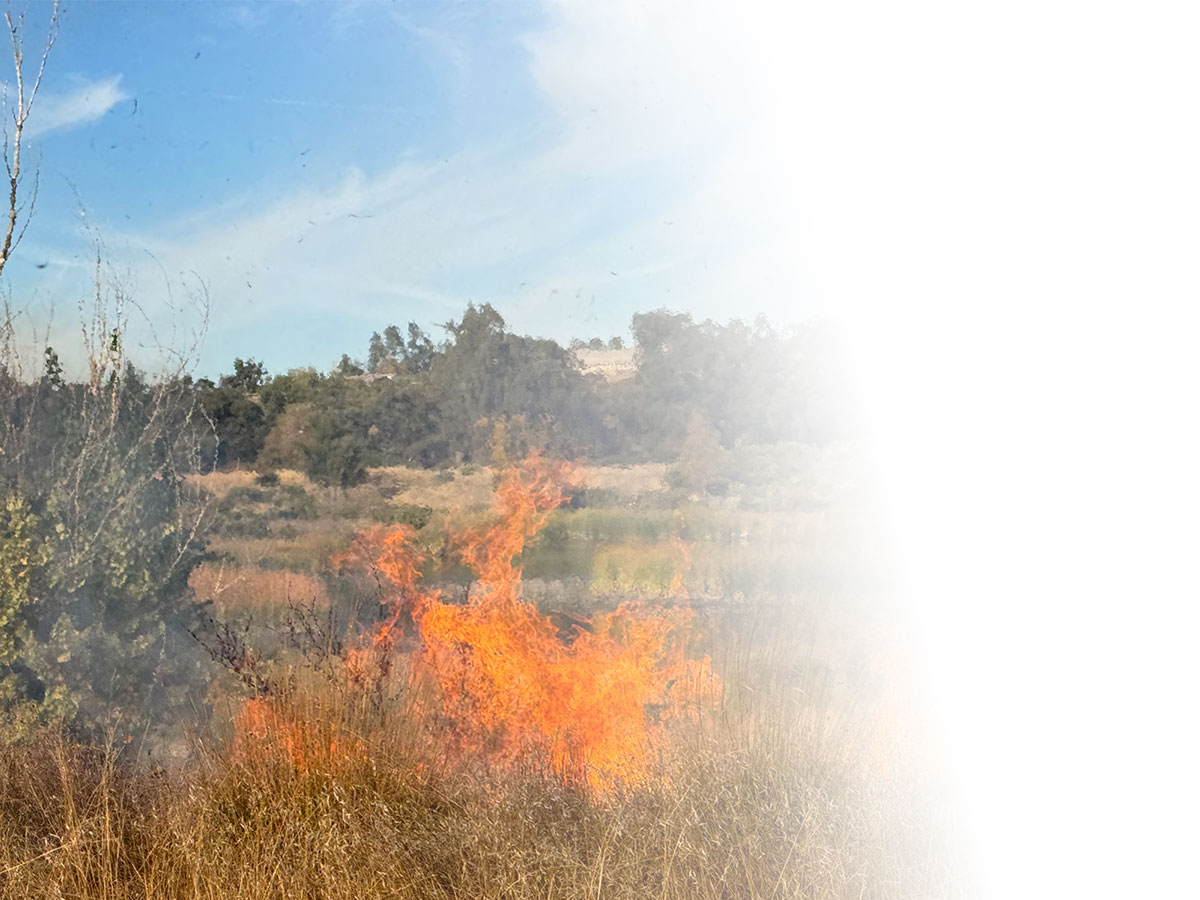
Wind and movement feeds me as I am carried to a swath of grass and shrub. I spark and crackle and blacken the earth with my dancing appetite.
I speak in my language to the seeds and craggy roots. “Break out!”, I singe and blacken and blister. “Transform!”, I crisp and carbonize. “It’s time to begin anew!”
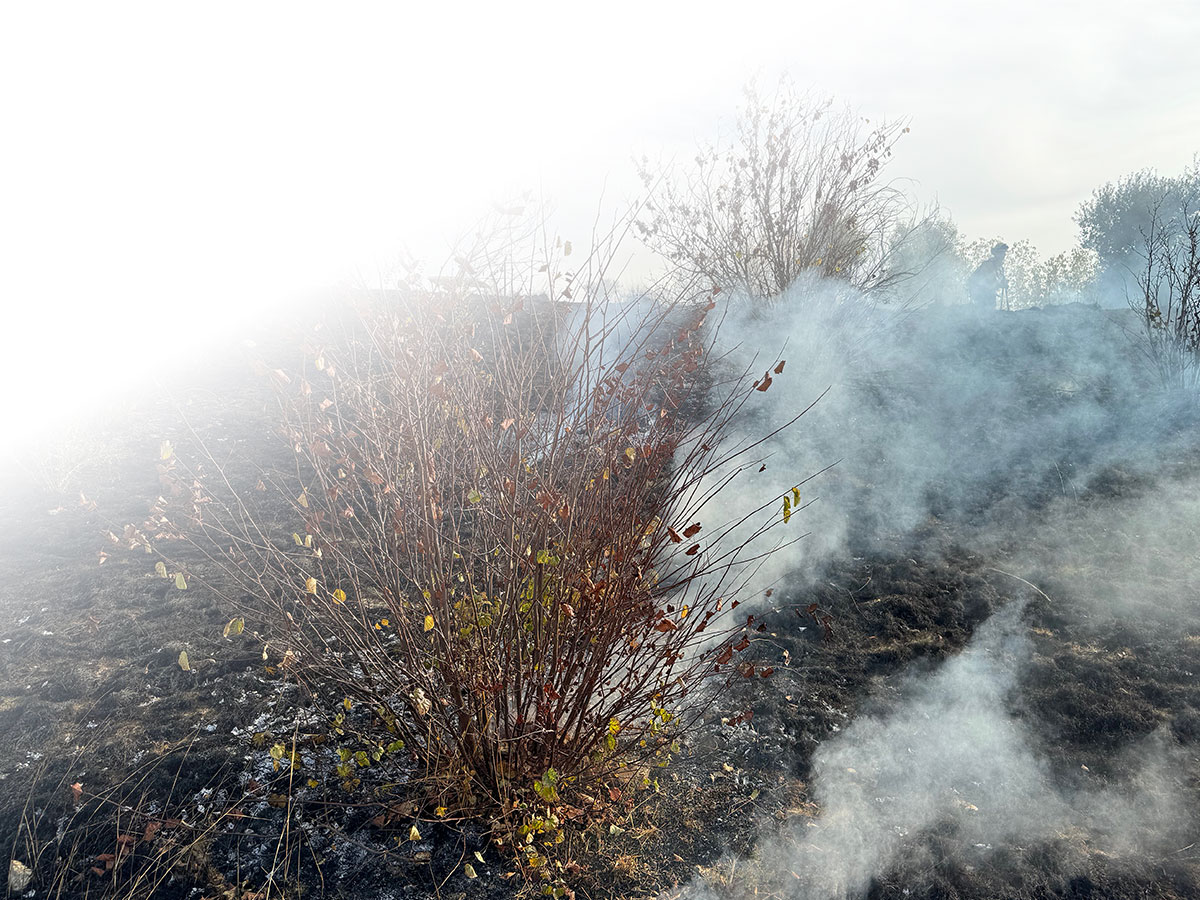
As I fade, I lift my awareness to find I am being carried to many places and given many kinds of food.
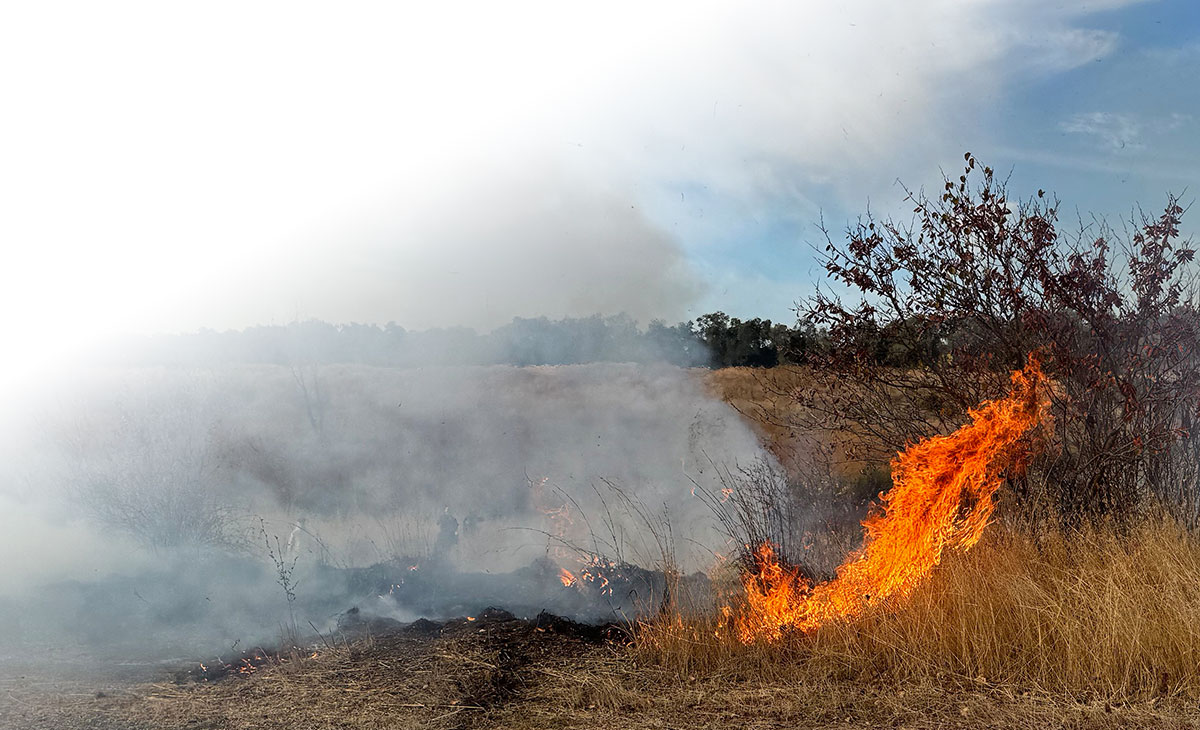
I fly like the birds and float like the clouds and I sculpt the air with smoke and flame.

From my human relatives, I can taste awe, alertness, joy and sometimes fear.
But the fearful are just young or they have forgotten. They can’t see that I am in alliance with the elders and their passionate learners.
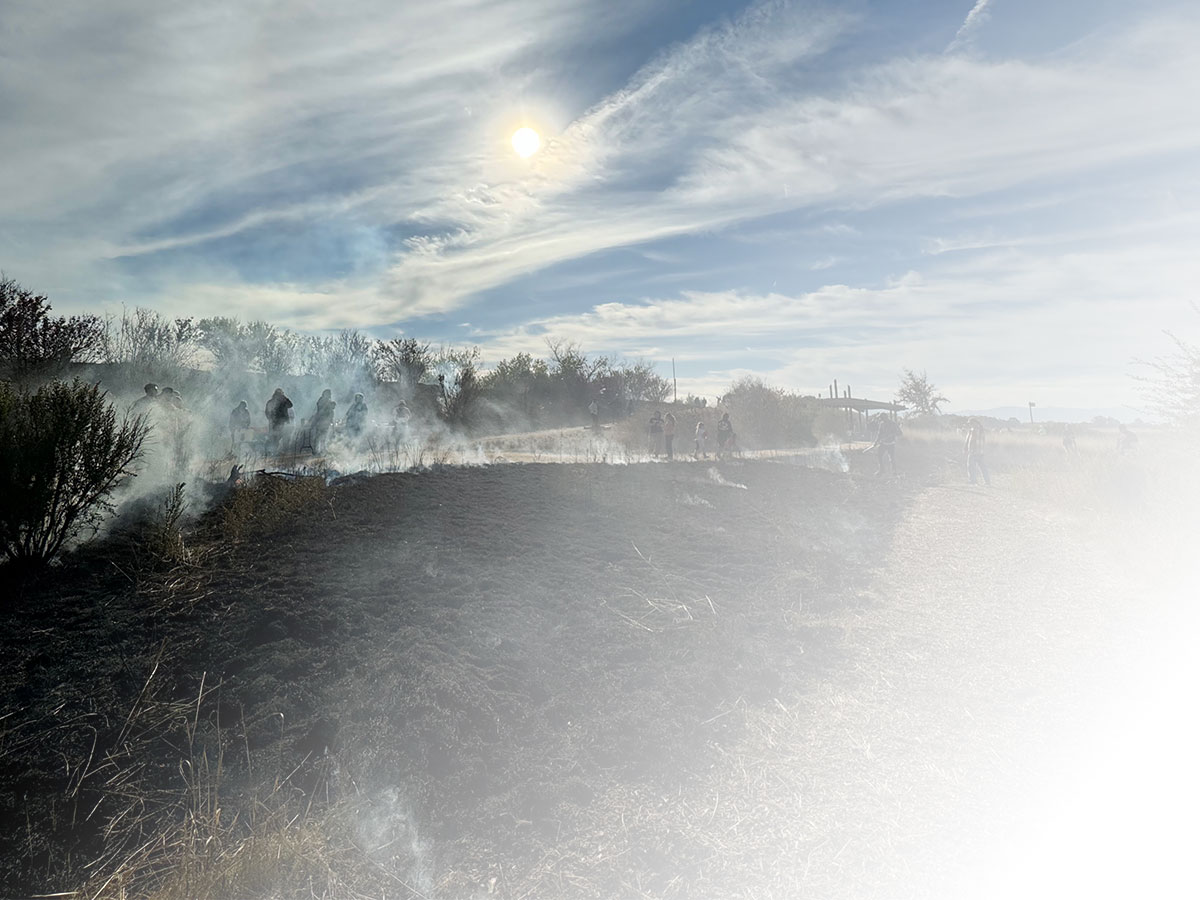
Together with the wind and water and limits of fuel, I stay at the edges of our combined intention.
Before the day is over, I have tasted the sun in green fiber, the coming winter and the promise of birth.
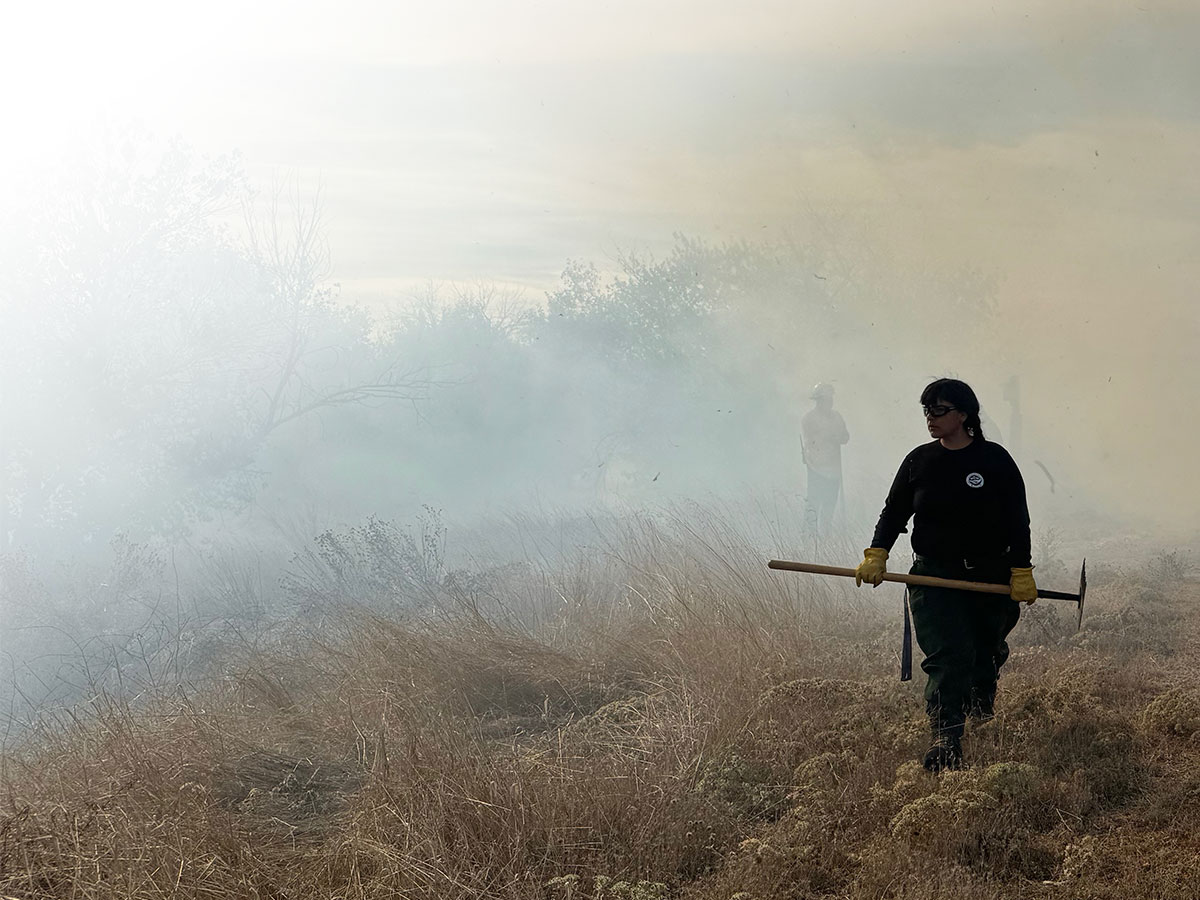
I am Leok Po, the littlest sister of molten Earth. Through destruction, I create on the scale of Life at the surface.
I connect Love’s creatures and remind them of ancient, cosmic power.
I’ve been lost, but now I’m found.
Contributed by Christine Golden, Woodland CA, 2023
